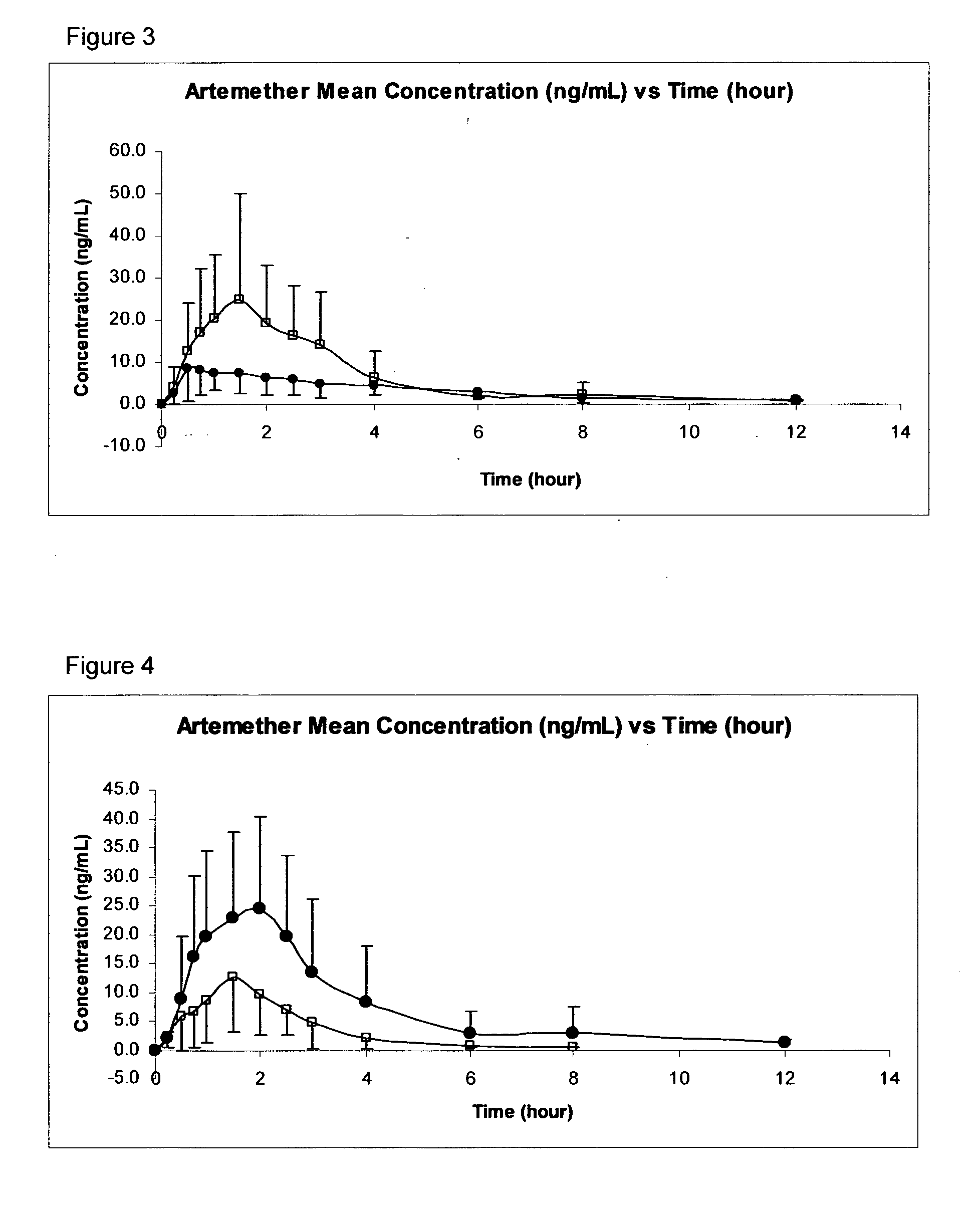Anti-malarial pharmaceutical composition
a pharmaceutical composition and anti-malarial technology, applied in the direction of drug compositions, aerosol delivery, spray delivery, etc., can solve the problems of drug resistance, drug administration difficulties, and inability to bring the disease under control, so as to reduce the likelihood of medicament swallowing, increase the mucosa area, and reduce the likelihood of drug swallowing
- Summary
- Abstract
- Description
- Claims
- Application Information
AI Technical Summary
Benefits of technology
Problems solved by technology
Method used
Image
Examples
Embodiment Construction
[0036]One of the most important aspects of providing a clinically useful treatment for malaria is to provide a formulation and an administration route for any active ingredient that can withstand the challenges of those communities where malaria is an especially acute problem, such as in sub-Saharan Africa. For example, any formulation needs to be stable for long periods of time, and at the relatively high temperatures encountered there. The medicament will often need to be administered (without delay) to children who are weak, malnourished, and likely to be suffering from vomiting and diarrhea. In many cases, the medicament may also need to be administered by non-medically-trained personnel. It is also important for any active ingredient to have good (and consistent) bioavailability, to ensure that the drug reaches the site of action without adverse side effects.
[0037]In order to address these problems, the inventors have found that the transmucosal sublingual, buccal or nasal rout...
PUM
| Property | Measurement | Unit |
|---|---|---|
| volume | aaaaa | aaaaa |
| mean droplet diameter | aaaaa | aaaaa |
| volume | aaaaa | aaaaa |
Abstract
Description
Claims
Application Information
 Login to View More
Login to View More - R&D
- Intellectual Property
- Life Sciences
- Materials
- Tech Scout
- Unparalleled Data Quality
- Higher Quality Content
- 60% Fewer Hallucinations
Browse by: Latest US Patents, China's latest patents, Technical Efficacy Thesaurus, Application Domain, Technology Topic, Popular Technical Reports.
© 2025 PatSnap. All rights reserved.Legal|Privacy policy|Modern Slavery Act Transparency Statement|Sitemap|About US| Contact US: help@patsnap.com



